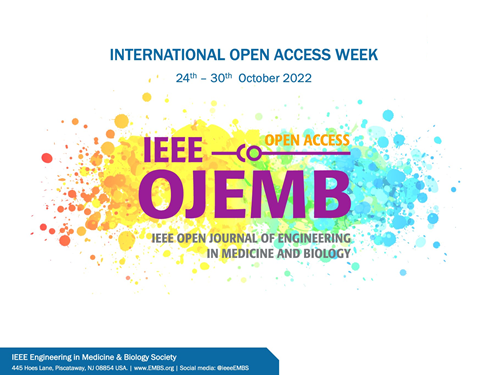A Propulsion Neuroprosthesis Improves Overground Walking in Community-Dwelling Individuals After Stroke
IF 2.9
Q3 ENGINEERING, BIOMEDICAL
IEEE Open Journal of Engineering in Medicine and Biology
Pub Date : 2024-07-04
DOI:10.1109/OJEMB.2024.3416028
引用次数: 0
Abstract
Functional electrical stimulation (FES) is a common neuromotor intervention whereby electrically evoked dorsiflexor muscle contractions assist foot clearance during walking. Plantarflexor neurostimulation has recently emerged to assist and retrain gait propulsion; however, safe and effective coordination of dorsiflexor and plantarflexor neurostimulation during overground walking has been elusive, restricting propulsion neuroprostheses to harnessed treadmill walking. We present an overground propulsion neuroprosthesis that adaptively coordinates, on a step-by-step basis, neurostimulation to the dorsiflexors and plantarflexors. In 10 individuals post-stroke, we evaluate the immediate effects of plantarflexor neurostimulation delivered with different onset timings, and retention to unassisted walking (NCT06459401). Preferred onset timing differed across individuals. Individualized tuning resulted in a significant 10% increase in paretic propulsion peak (Δ: 1.41 ± 1.52%BW) and an 8% increase in paretic plantarflexor power (Δ: 0.27 ± 0.23 W/kg), compared to unassisted walking. Post-session unassisted walking speed, paretic propulsion peak, and propulsion symmetry all significantly improved by 9% (0.14 ± 0.09 m/s), 28% (2.24 ± 3.00%BW), and 12% (4.5 ± 6.0%), respectively, compared to pre-session measurements. Here we show that an overground propulsion neuroprosthesis can improve overground walking speed and propulsion symmetry in the chronic phase of stroke recovery. Future studies should include a control group to examine the efficacy of gait training augmented by the propulsion neuroprosthesis compared to gait training alone.推进型神经假体可改善中风后社区居民的地面行走能力
功能性电刺激(FES)是一种常见的神经运动干预方法,通过电诱发背屈肌收缩来帮助患者在行走过程中清理足部。然而,在地面行走过程中,背屈肌和足底屈肌神经刺激的安全和有效协调一直是个难题,这使得推进神经假体只能在跑步机上行走。我们介绍了一种地面推进神经假体,该假体能逐步自适应地协调对背屈肌和跖屈肌的神经刺激。在 10 名中风后患者中,我们评估了以不同起始时间进行足底神经刺激的直接效果,以及保持无辅助行走的效果(NCT06459401)。不同个体偏好的起始时间各不相同。与无辅助行走相比,个性化调整使瘫痪患者的推进峰值显著增加 10%(Δ:1.41 ± 1.52%BW),瘫痪患者的足反射动力增加 8%(Δ:0.27 ± 0.23 W/kg)。与训练前的测量结果相比,训练后的无助行走速度、瘫痪推进峰值和推进对称性均有显著提高,分别提高了 9% (0.14 ± 0.09 m/s)、28% (2.24 ± 3.00%BW) 和 12% (4.5 ± 6.0%)。我们在此表明,在中风恢复的慢性阶段,地面推进神经假体可以提高地面行走速度和推进对称性。未来的研究应包括一个对照组,以检验通过推进神经假体增强步态训练与单独步态训练相比的疗效。
本文章由计算机程序翻译,如有差异,请以英文原文为准。
求助全文
约1分钟内获得全文
求助全文
来源期刊

IEEE Open Journal of Engineering in Medicine and Biology
ENGINEERING, BIOMEDICAL-
CiteScore
9.50
自引率
3.40%
发文量
20
审稿时长
10 weeks
期刊介绍:
The IEEE Open Journal of Engineering in Medicine and Biology (IEEE OJEMB) is dedicated to serving the community of innovators in medicine, technology, and the sciences, with the core goal of advancing the highest-quality interdisciplinary research between these disciplines. The journal firmly believes that the future of medicine depends on close collaboration between biology and technology, and that fostering interaction between these fields is an important way to advance key discoveries that can improve clinical care.IEEE OJEMB is a gold open access journal in which the authors retain the copyright to their papers and readers have free access to the full text and PDFs on the IEEE Xplore® Digital Library. However, authors are required to pay an article processing fee at the time their paper is accepted for publication, using to cover the cost of publication.
 求助内容:
求助内容: 应助结果提醒方式:
应助结果提醒方式:


